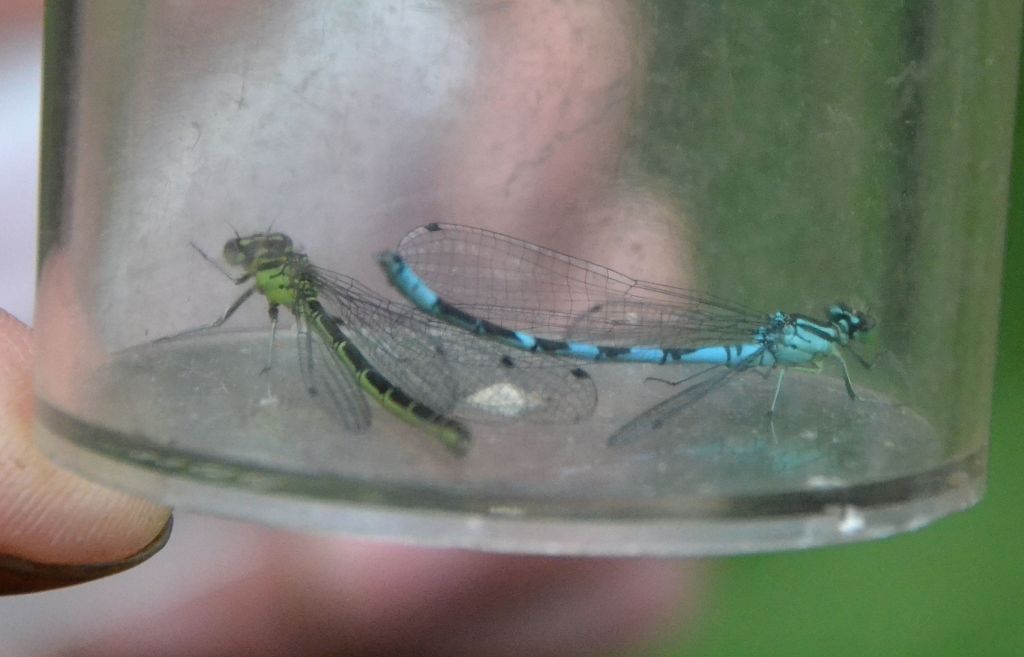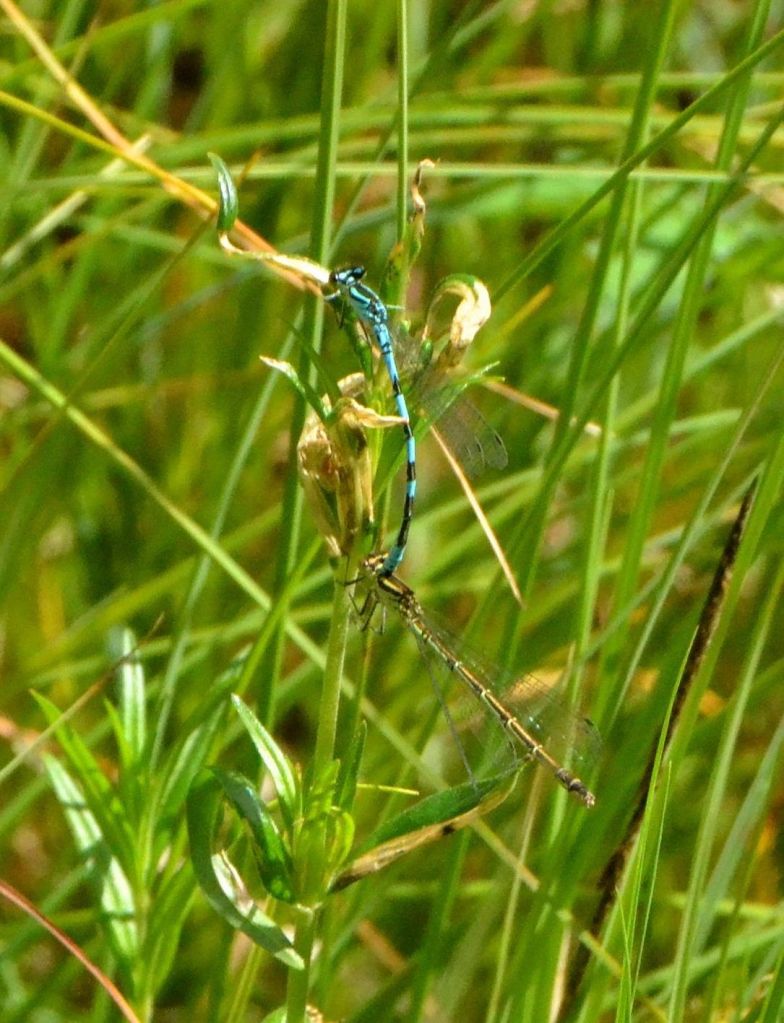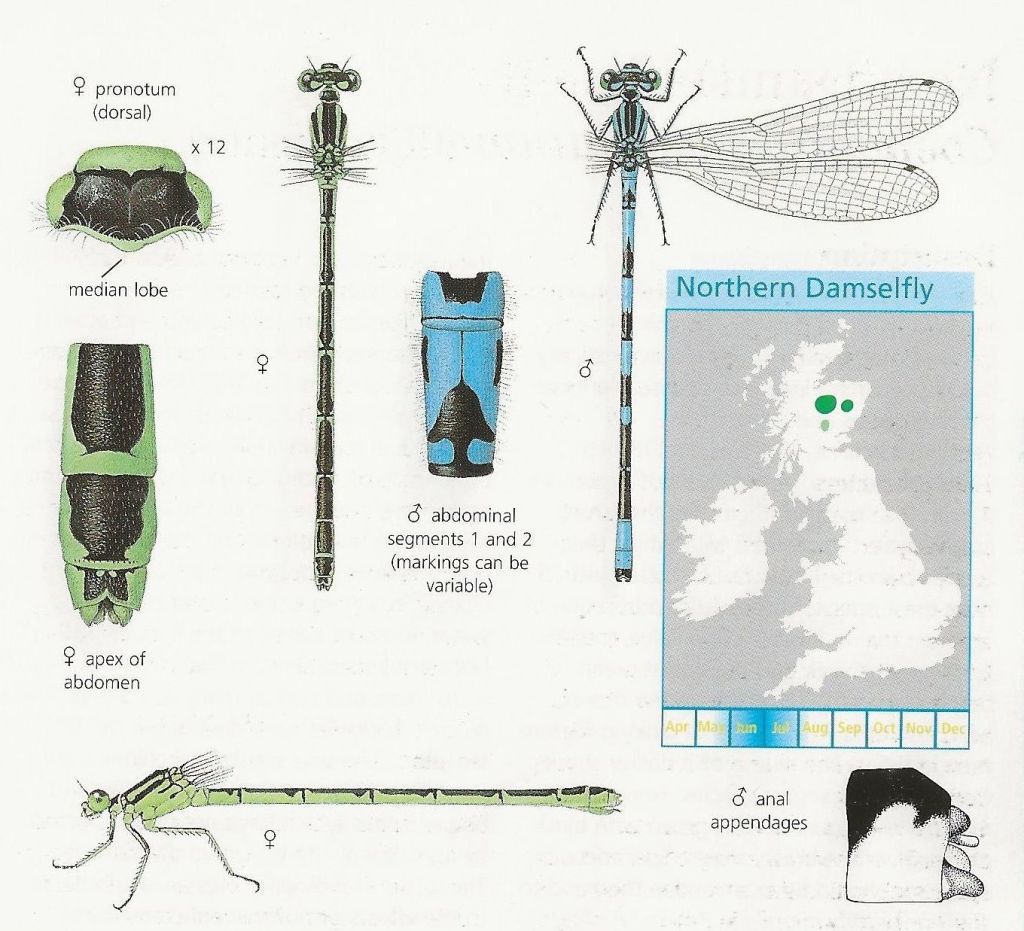This was the only one of the three prime odo trip targets to be converted. Having previously recorded every native English damselfly, with the exception of Sandwich Bay’s Dainty colony, I now needed Scotland’s one further species to expand that list to Great Britain.
Our guide’s chosen site was the Rothiemurchus Estate (NH895093) where there are a number of lochans. By contrast with the Common Blue Damselflies they associate with, our quest stands out by flying weakly and low down in long grass at the water’s edge, and rarely over large expanses of open water. We were led to such an overgrown location where several pairs of Northern Damselfly were located.
This is one of the scarcest British damselflies, occurring only at around 26 established sites in Scotland where they require quite a precise micro-habitat. Adults are nowhere abundant and there are few locations in which more than 100 have been observed at one time. Breeding waters tend to be shallow to 60cm and sheltered by dense stands of tall sedges.
Emergence takes place in mid-May, after which immatures may disperse for several hundred metres before returning to the breeding site in early June. Males then perch a short distance apart in low vegetation near the water’s edge to await females to mate with. The flight season lasts until early August.


The diagnostics of this damselfly were mostly plain to discern in the several tandem pairs and individuals that we observed at this site today:
- The underside of the eyes and face are noticeably bright green in both genders
- The blue and dark brown males have a spear-shaped marking on abdominal segments 1 and 2 that rather stands out. The standard international name for this damselfly is Spearhead Bluet.
- When examined closely males also exhibit two short black lines on each side of the thorax, compared to a single line in Common Blue Damselfly
- In side view the paler parts of females are pea-green, unlike related species
Trip Conclusions
The morning of this and the previous post was the only suitable weather window for insects in the first five days of the week to 30th. In wanting some kind of holiday this year I took a chance on Scottish weather and the gamble largely failed. I would not pre-book wildlife travel to Scotland again.
On 1st July we visited Loch Bran (NH506192) where a few fly-by Northern Emerald were seen by some of the group, including one by myself. That dragonfly is characterised by a fast and direct flight and one went right by me as pointed out by our guides. Given my previous experience with Downy and Brilliant Emerald I feel sure this trip target must be another very difficult subject, requiring possibly days of fieldwork to observe well and capture pictorially. So I may need to content myself with this fly-by tick.
If I re-attempt Azure Hawker in the future it would have to be on the spur of the moment in response to a particularly fair weather forecast, if suitable flights and accommodation are available and whatever the logistics of all that might be. And the same applies to the two butterflies, Chequered Skipper and Mountain Ringlet.
Ultimately this half-baked trip will be remembered for the wildlife it did produce, principally mammals while the northern insects will have to wait who knows when for another day.


